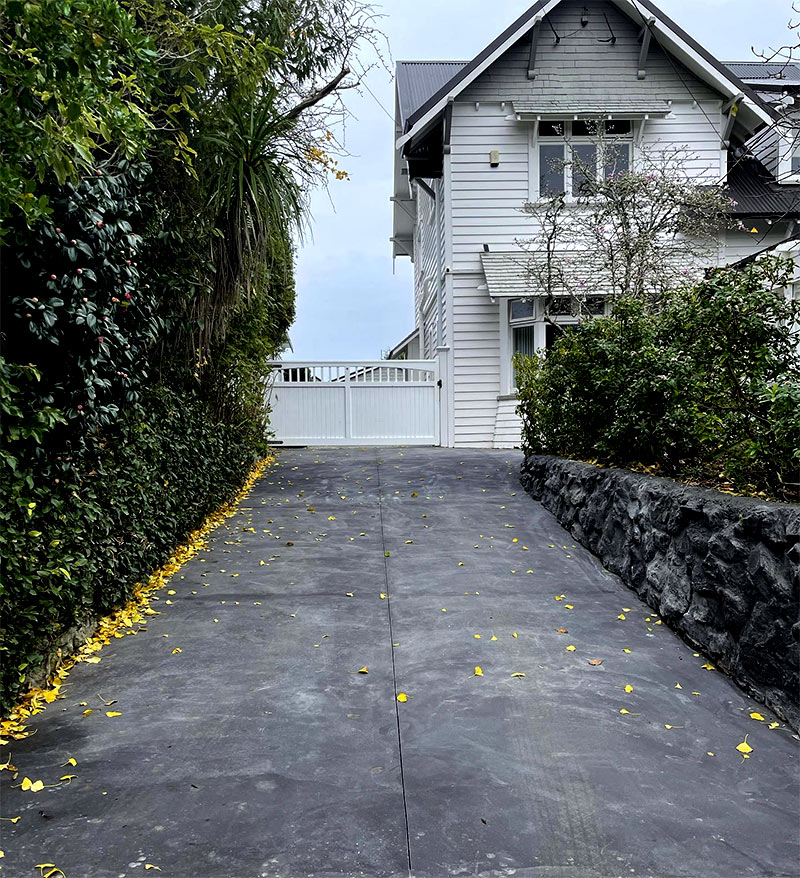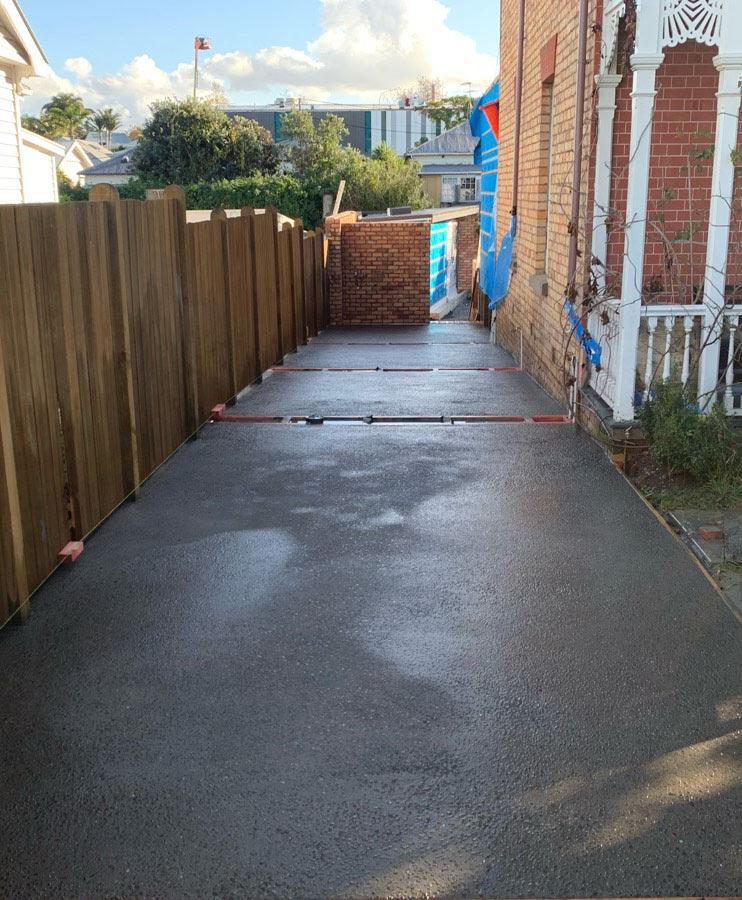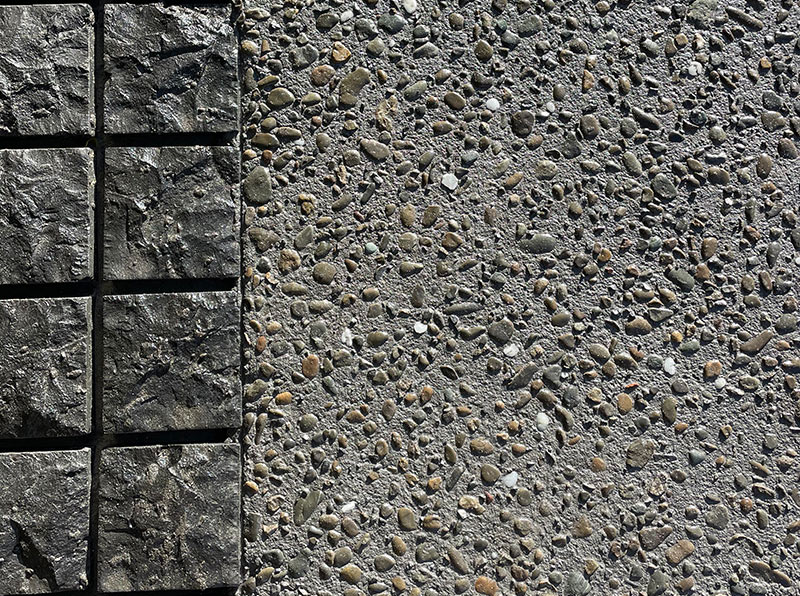

Decorative Concrete Floors
Decorative Concrete Floor Placers & Finishers
Concrete-iT is an award-winning Auckland concreting company, with specialist expertise in designing, placing and finishing decorative concrete floors.
We are Master Concrete Placers, with high standards of workmanship; reflected in Concrete-iT receiving NZ Master Concrete Placers Association Awards in 2021, 2018 and 2017. The awards were for concreting projects in Auckland, which included decorative concrete finishes.
Decorative concrete flooring options include:
- Exposed Aggregate - e.g. pebbles, stones, shells, sand
- Coloured Concrete - e.g. mineral oxide pigments, stains
- Coloured Grouting
- Stamped / Patterned / Stencilled Concrete
- Decorative Cuts
- Decorative Inlays - e.g. metal strips, timber, glass, plastic
- Textured Finishes & Concrete Grinding
- Acid Etching
- Concrete Polishing & Sealing
- Specialist Architectural Form Finishes
Textured Concrete
Floor Finishes
The surface texture of concrete is an important aspect of the look, feel, slip-resistance and ease of cleaning/maintaining concrete floors.

Texture finish options include:
Smooth Texture: The standard finish for internal Residential concrete floors; removes float marks.
Light Trowel – smooth finish: Residential & Commercial floors; some visible surface trowel marks.
Natural Polish – smooth finish: Residential & Commercial floors; low-speed stone grinding – doesn’t expose aggregate.
Salt & and Pepper Grind / Light Grind (smooth finishes): Residential & Commercial floors; low-speed stone grinding – exposes aggregate tips only.
Medium Grind – smooth finish: Residential & Commercial floors; low-speed stone grinding – exposes mid-level of aggregate.
Heavy Grind – smooth finish: Residential & Commercial floors; deep stone grinding – exposes more aggregate.
Machined – smooth finish: Increases surface durability for Commercial and Industrial concrete floors. E.g. In high-use and/or heavy machinery areas.
Exposed Aggregate
Concrete Floors
Adding exposed aggregates to concrete mix is a popular choice for creating contemporary, yet practical concrete floors. Natural variations in aggregate colours, densities and textures, add to the decorative appeal.
Acid Etching is often part of the process; we strip some surface concrete away and ‘etch’ finer concrete around the aggregate. This helps create a smooth, yet slip-resistant floor which is also comfortable to walk on.

FAQ: DECORATIVE CONCRETE FLOORS
Click to see Answers. If your question isn’t below, please contact Concrete-iT.
Do you have coloured concrete samples?
Yes – when we visit your site, we can bring colour samples. Please bear in mind that because concrete is a natural material, the final colour will be as close as possible to the sample you choose, but may not be an exact match.
Will the colour in the concrete floor vary / will it fade?
Some colour variation in concrete flooring is to be expected. The final shade and finish can be influenced by factors such as: variations which occur naturally in raw materials, the technique used, site and weather conditions, and the concrete curing process.
Exposed aggregate floors may include various aggregates, which may have small amounts of organic matter. In some cases, this may include iron pyrite particles – which, through oxidation, may cause some brown colouring on the surface.
Can you colour exposed aggregate concrete?
Yes – there are a range of options for colouring exposed aggregate concrete floors. Colour choices are often influenced by the colours of the aggregate/aggregates in the concrete mix.
How long does concrete need to cure?
Concrete should be cured for at least 24 to 48 hours before formwork is removed and the surface can be walked on. After 7 days*, the concrete is partially cured and strong enough for heavier loads. After 28 days, concrete should be fully cured.
Poor curing can reduce concrete strength by up to 50%, and increase the risk of shrinkage-induced cracking, despite control joints being saw-cut. Cracking typically becomes noticeable after two weeks at the earliest and cracks can continue to widen for months. The risk of shrinkage cracking is minimised by using reinforcing, the correct positioning of control joints, compaction and using the appropriate concrete mix.
Effective curing also improves concrete durability and abrasion resistance.
How much does weather affect laying or curing concrete?
Temperature: The ideal temperature for curing concrete is about 20°C. We don’t lay/pour concrete at the hottest time of day, or when it is too cold (e.g. under 5 °C, as the concrete may freeze, then not cure properly).
How long does concrete last?
The life expectancy of concrete depends on factors such as: the quality of the installation, environmental conditions, and whether or not the concrete is kept well-maintained and not subjected to excessive loads. Concrete can last for up to 50 years (especially if it is sealed).
